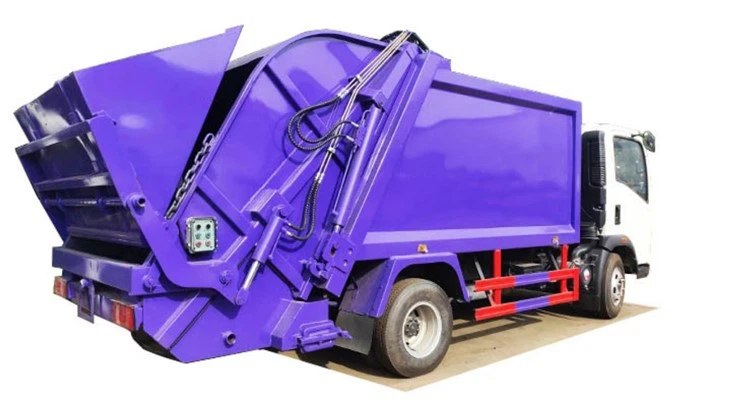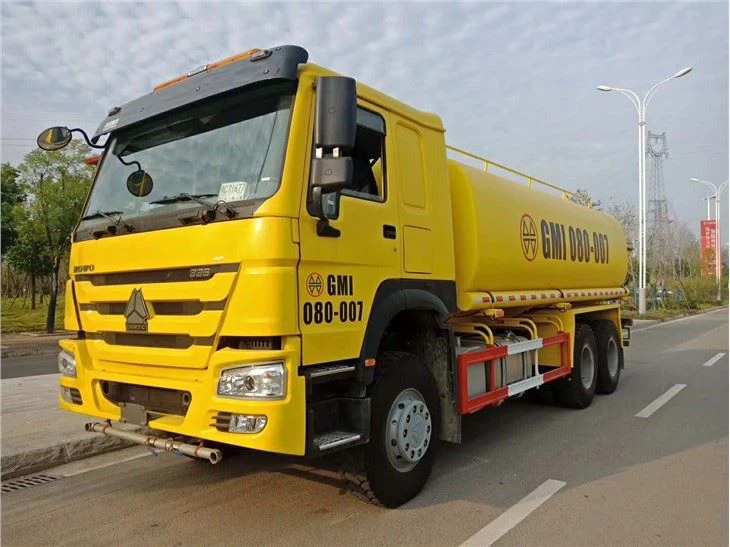Semi Truck Mini: Understanding the Compact Powerhouse of the Roads

Introduction to Semi Truck Mini
The semi truck mini is a growing trend in the transportation and logistics industry, combining the benefits of traditional semi trucks with the advantages of smaller, more versatile vehicles. As urbanization increases and delivery demands shift, businesses are turning to these compact solutions to navigate tight spaces while maintaining efficiency. This article explores the different aspects of semi truck minis, including their design, advantages, operational costs, and practical applications. Whether you’re a trucking professional or simply curious about this innovative vehicle, you’ll find valuable information throughout this comprehensive guide.
1. What is a Semi Truck Mini?
A semi truck mini is essentially a smaller version of a traditional semi-truck, designed to carry similar loads but with a compact build that allows for easier maneuverability in urban areas. These vehicles usually have shorter wheelbases and lower weight ratings than conventional semis, making them ideal for tasks that require precision driving in crowded environments.
1.1 Key Features
- Smaller dimensions
- Lower weight capacity, generally under 26,000 lbs
- Fuel-efficient engines
- Enhanced maneuverability
1.2 Comparison with Traditional Semi-Trucks
| Feature | Semi Truck Mini | Traditional Semi-Truck |
|---|---|---|
| Size | Compact | Large |
| Weight Capacity | Up to 26,000 lbs | Over 26,000 lbs |
| Maneuverability | High | Medium |
| Fuel Efficiency | Higher | Lower |
2. Benefits of Using Semi Truck Minis
There are several advantages of using semi truck minis as a logistics solution. Understanding these benefits can help businesses optimize their operations for last-mile deliveries and other needs.
2.1 Urban Accessibility
Due to their smaller size, semi truck minis can easily navigate urban environments, allowing for quick access to confined spaces such as narrow streets and busy intersections. This is particularly beneficial for delivery services operating in densely populated areas.
2.2 Cost-Effectiveness
Fuel efficiency and lower maintenance costs contribute to the overall affordability of semi truck minis. They often consume less fuel than full-sized trucks, translating into significant savings over time.
2.3 Versatility in Cargo Transport
Despite their size, semi truck minis are perfect for a variety of cargo types, making them suitable for industries including e-commerce, food transportation, and local deliveries. Their versatility allows businesses to use them for diverse applications without needing multiple types of vehicles.
3. The Design and Technology Behind Semi Truck Minis
3.1 Engine and Performance
Semi truck minis typically come equipped with smaller, more efficient engines that provide satisfactory power while minimizing fuel consumption. Most models are powered by turbocharged diesel or gasoline engines, ensuring reliability and performance in various conditions.
3.2 Safety Features
Modern semi truck minis are fitted with advanced safety features, including:
- Anti-lock braking systems
- Blind spot monitoring
- Electronic stability control
- Rearview cameras
3.3 Innovative Technology Integration
Technology plays a significant role in the semi truck mini’s functionality. Many models include GPS navigation, telematics systems for monitoring vehicle health, and various driving assistance features that enhance maneuverability and safety.
4. Practical Applications of Semi Truck Minis
Semi truck minis can be employed in numerous sectors. Here are some scenarios where they have proven particularly effective.
4.1 E-Commerce Deliveries
The rise of e-commerce has fueled the need for efficient last-mile delivery solutions. Semi truck minis provide a great option for making frequent deliveries to customers in urban settings, allowing for quick drop-offs without needing larger vehicles.
4.2 Food and Beverage Distribution
Restaurants and food suppliers benefit from using semi truck minis for delivering fresh produce and packaged goods. With their nimble size, these trucks can easily navigate bustling neighborhoods and satisfy customer demands for timely service.
4.3 Moving Services
Moving companies can leverage semi truck minis when transporting smaller loads or serving customers in residential areas with limited access. They make it easier to maneuver around driveways and through tight spaces in communities.
5. Operational Costs of Semi Truck Minis
Understanding the overall costs associated with semi truck mini operations can help business owners make informed decisions. Here, we break down key cost factors.
5.1 Purchase Price
The initial purchase price for semi truck minis is generally lower than traditional semi trucks, making it an attractive option for new businesses or those looking to expand their fleet without incurring significant debt.

5.2 Maintenance Costs
Regular maintenance is essential for keeping any vehicle in optimal condition. Semi truck minis tend to have lower maintenance costs due to their simplicity and fewer parts compared to larger models, offering long-term savings for fleet operators.

5.3 Insurance Expenses
Insurance premiums for semi truck minis are typically cheaper than for traditional semis due to their lower market value and risk classification. This can significantly contribute to yearly savings for businesses.

6. Tips for Operating a Semi Truck Mini
To maximize the efficiency of operating a semi truck mini, consider the following tips:
6.1 Regular Maintenance Checks
Implement a regular maintenance schedule to check the engine, brakes, tires, and other essential components. This will help prevent breakdowns and extend the vehicle’s lifespan.
6.2 Proper Training for Drivers
Ensure drivers receive training to operate semi truck minis effectively. Familiarity with the vehicle’s features and dimensions is crucial for navigating tight spaces and ensuring safety.
6.3 Optimize Routes
Utilize route optimization software to find the most efficient paths for deliveries. Avoiding congested areas can enhance fuel efficiency and decrease delivery times.
7. Environmental Considerations
As sustainability becomes increasingly important, semi truck minis offer several environmental benefits.
7.1 Fuel Efficiency
Compared to larger trucks, semi truck minis are generally more fuel-efficient, leading to lower greenhouse gas emissions per mile traveled. This makes them a greener alternative for transporting goods.
7.2 Smaller Footprint
The compact size of semi truck minis means they take up less space and reduce congestion in urban areas, contributing to less pollution and improved air quality.
FAQs about Semi Truck Minis
1. What types of loads can a semi truck mini carry?
A semi truck mini can carry a variety of loads, typically up to 26,000 lbs. Common applications include grocery deliveries, furniture moving, and e-commerce packages.
2. Are semi truck minis suitable for long-haul trucking?
While semi truck minis are designed primarily for shorter, urban transport, they can be used for regional deliveries. However, for long-haul trips, traditional semi trucks are generally more appropriate due to their higher capacity.
3. How do I choose the right semi truck mini for my business?
Consider factors such as your typical load requirements, operational costs, and the type of routes you will be traveling. Test driving different models for comfort and maneuverability is also advised.
4. What are the maintenance needs for semi truck minis?
Regular maintenance needs include oil changes, brake inspections, tire rotations, and checking fluid levels. Establishing a maintenance schedule is crucial to extend the life of the vehicle.
5. How fuel-efficient are semi truck minis compared to traditional trucks?
Semi truck minis tend to be more fuel-efficient than traditional trucks, typically achieving better miles per gallon (MPG) due to their smaller size and lighter engines.
6. Can I drive a semi truck mini with a standard driving license?
Many semi truck minis fall under the Class C license category, which means you might not need a special commercial driver’s license (CDL) to operate them. However, check your local regulations as they can vary.
